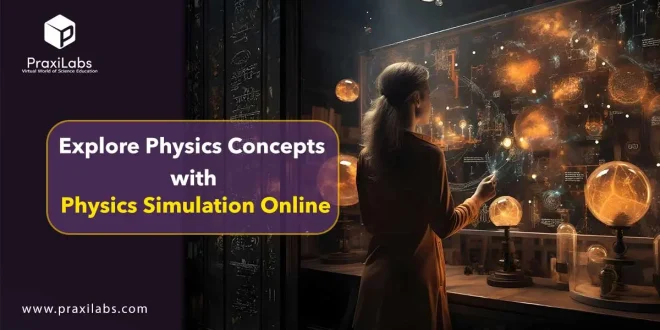Last Updated on September 17, 2025 by Muhamed Elmesery
Physics simulation online is a digital e-learning method that allows students to perform their experiments and understand physics concepts in a simulated environment.
In this blog post, we will explore Physics concepts with physics simulation online, topics covered in these simulations, features to look for in a good physics simulation platform, examples from interactive physics simulations in PraxiLabs, and our contribution in physics virtual learning.
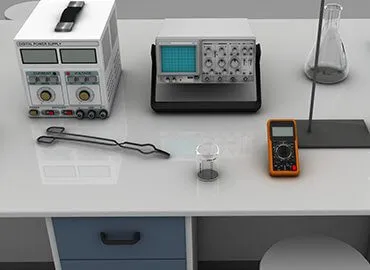
Table of Contents
What is physics simulation online?
Physics simulation online is a computer-based virtual lab that simulates the real physics lab and requires an internet connection to understand different principles and protocols by doing physics experiments anytime, anywhere, without any pressure on your own peace.
3D Physics lab simulator covers a wide range of topics such as:
Modern physics:
Includes quantum mechanics, laser, and relativity. It deals with phenomena that occur at very large or very small scales, very high speeds, and under extreme conditions.
- E.g., Black Body Radiation – Laser Beam Divergence.
Magnetism:
Deals with phenomena associated with magnetic fields, which arise from the motion of electric charges.
- E.g., Magnetic Moment of a Bar Magnet – Magnetic Field of a Circular Loop Current.
Studies the electric charges, and the effects associated with the presence or motion of matter possessing an electric charge.
- E.g., Measurement of Ohmic Resistances Using Ammeter and Voltmeter – Kirchhoff’s Loop Rule.
Heat and Thermodynamics:
Study the energy transfer due to temperature differences, and how heat, work, and energy are related, and how they affect the properties of matter.
- E.g., Boyle’s Law of Gases – Joule’s Experiment.
Waves:
Deals and studies phenomena where disturbances transfer energy through a medium or space.
- E.g., Simple Pendulum – Speed of Sound Using Open Columns.
Properties of matter:
Studies the fundamental properties of matter, such as solids, liquids, and gases, which are composed of a large number of interacting particles.
- E.g., Archimedes’ Principle – Young’s Modulus for a Metallic Rod V – Determination of Coefficient of Viscosity by Stokes’ Method
Features to Look for in a good physics simulation platform
When evaluating a physics simulation platform, you want to ensure it meets your goals effectively.
Here are the top five features to look for in a good physics simulation platform:
Scientific Accuracy
- Realistic simulations of physical laws and concepts (Newton’s laws, Archimedes’ Principle).
- Verified/validated results.
- Units and dimensional consistence.
Why it matters: Misleading or oversimplified simulations can teach incorrect physics.
Range of Topics
- Mechanics, heat, thermodynamics, waves, optics, modern physics.
- Can be customized for advanced topics.
- Covers lab experiments, demonstrations, and conceptual explorations.
Why it matters: Broader coverage supports diverse curricula.
Interactivity and Control
- Real-time feedback and visualization.
- Ability to pause, rewind, fast-forward, and skip a step through simulations.
Why it matters: Hands-on manipulation sharpens understanding.
User Experience and Accessibility
- Simple, intuitive interface.
- Multilanguage support.
- Accessibility features.
Why it matters: Ensures all learners can use it effectively.
Integration Capabilities
- LMS integration (Moodle, blackboard).
- Ability to share simulations via links or embeds.
Why it matters: Seamless integration improves adoption.
PraxiLabs provides instant and unlimited access to several physics simulations you need from anywhere, without the hassle of going to the laboratory from our Physics simulation app or platform. Let your young scientists enjoy their journey, anytime!
Create free account and experience our solution first-hand
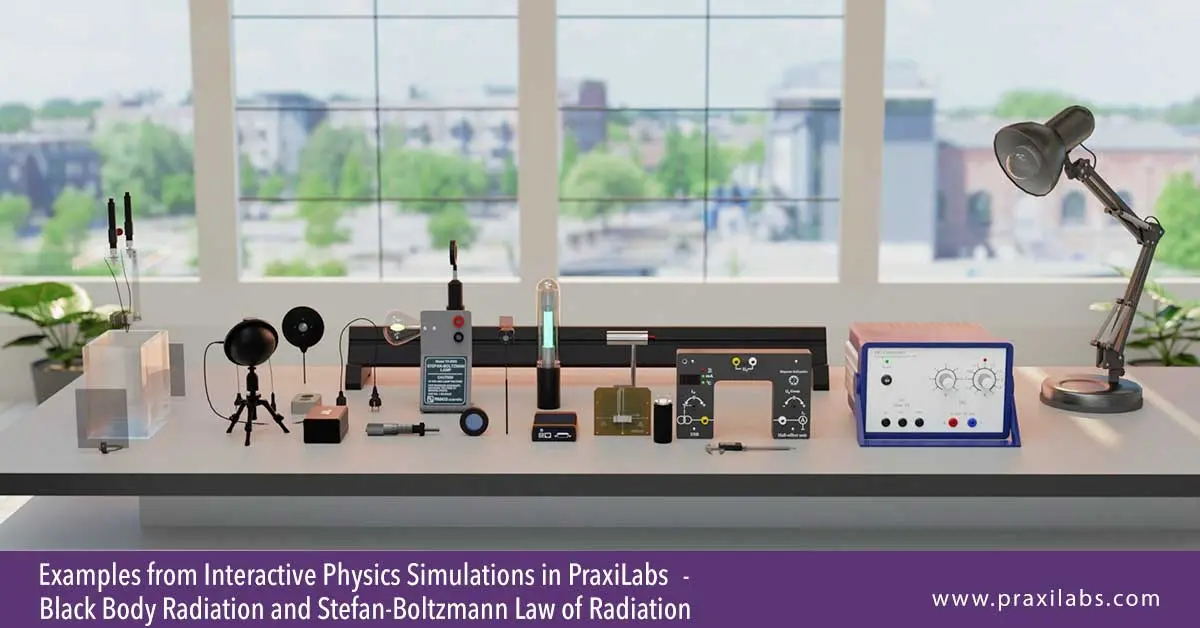
Examples from Interactive physics simulations in Praxilabs
Black Body Radiation and Stefan-Boltzmann Law of Radiation
Teach your students how to:
- Explain the blackbody radiation.
- Interpret Planck’s curve for the radiation emitted by a hot body.
- Correlate the relationship between the temperature of the black body and the wavelength at which the intensity of the radiation emitted by it is maximum.
- Inspect the applicability of the Inverse Square Law in the case of the radiation emitted by a black body.
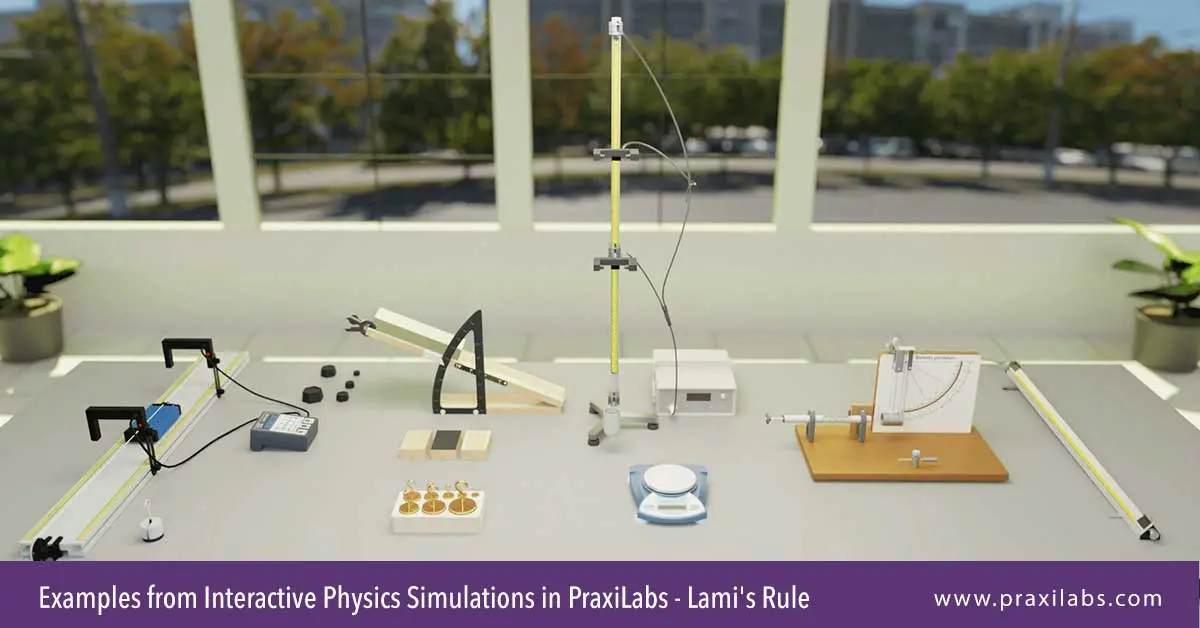
Lami’s Rule
By the end of the experiment, students will be able to:
- Understand Lami’s Rule.
- Apply Lami’s Rule to find the unknown weight.
- Understand the relationship between forces acting on a point at equilibrium and the angles between them.
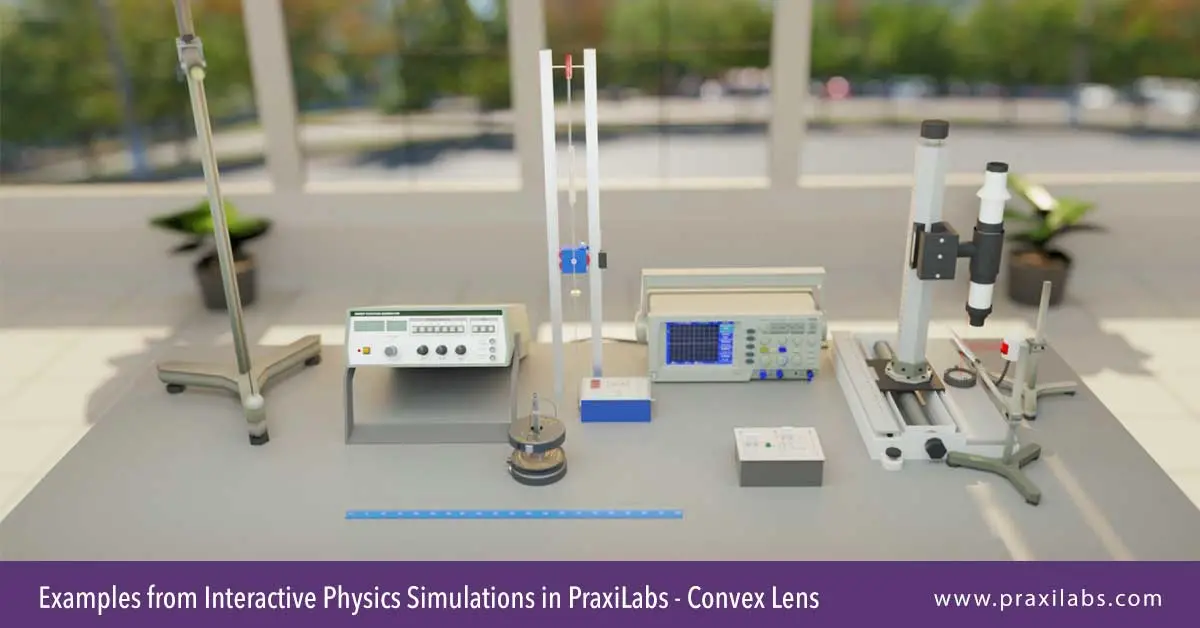
Convex Lens
By the end of the convex lens simulation, the student should be able to:
- Identify the convex lens.
- Explain the image formation by a convex lens.
- Set up an experiment to determine the focal length of a convex lens using the general law of lenses and mirrors.
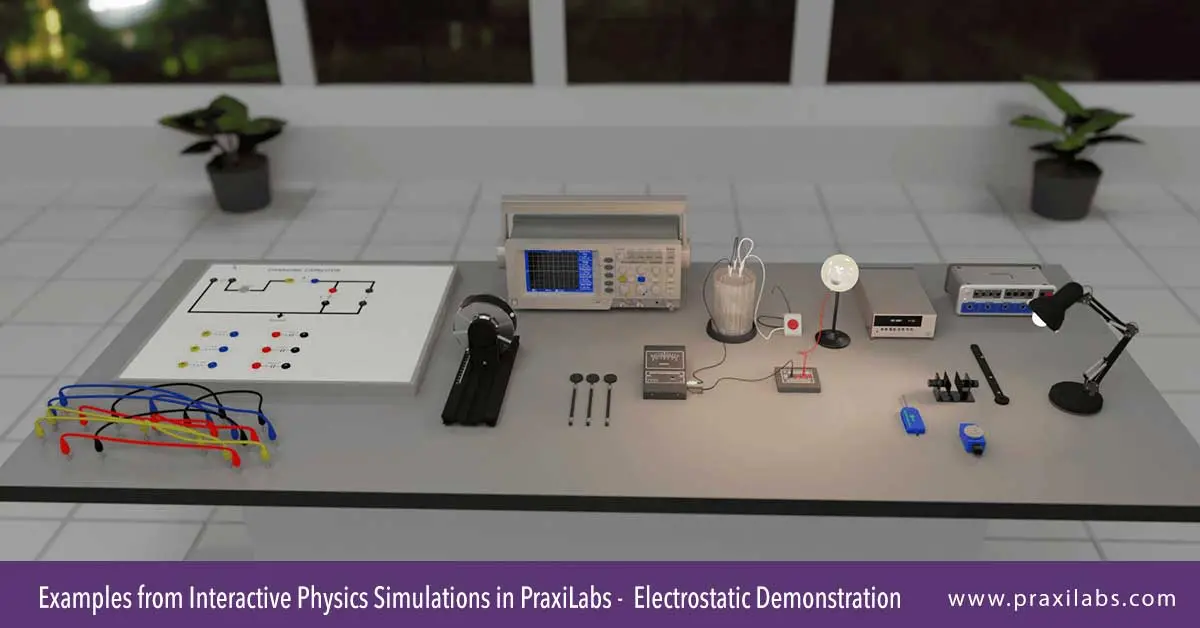
Electrostatic Demonstration
Teach your students how to:
- Investigate the law of conservation of charge and different ways of charging.
- Investigate how charge distributes on the outer surfaces of a spherical conductor and on the outer surface of a non-spherical conductor.
- Investigate how the charge is distributed inside the spherical conductor.
Try PraxiLabs and Experience a Virtual World of Science Education
Pick the Best Virtual Plan or You
Praxilabs’ Contribution in Physics Virtual Learning
PraxiLabs as a one of the best 3D physics simulation online platform, offers a variety of physics experiments for educational purposes, including simulations of real-world scenarios and investigations into fundamental physics concepts.
These simulations allow students to explore topics such as:
- Mechanics.
- Heat.
- Thermodynamics.
- Magnetism.
- Modern physics.
- Electricity.
- Waves.
- Properties of matter.
- Particle physics simulation online.
By using PraxiLabs | a study investigates the impact of physics education on the achievement of the tenth core class students in the Northern Mazar district of education
A study aimed to investigate the impact of physics education using the interactive simulation program and the virtual laboratories (Praxilabs) on the achievement of the students in the Northern Mazar district of education.
The study sample consisted of 105 students, divided into three randomly selected groups:
- The first experimental group studied using the interactive simulation program.
- The second experimental group studied using virtual laboratories (Praxilabs).
- The third group consisted of 32 students who studied using the standard method.
The study recommended that private physics teachers and general science teachers should use virtual laboratories (PraxiLabs) and interactive simulation programs in the educational process.
Now is your educational institution’s moment to power up your students’ inner scientists and open up a world of possibilities!
Frequently Asked Questions
How to start doing physics simulation?
All you need to start doing physics simulation 3D is to register in one of the trusted platforms that provide the simulation you need to try and understand. Create your free account and try it yourself.
How can I learn basic physics online?
You can learn basic physics online by using interactive methods such as 3D physics simulation online that enable you to conduct physics experiments and understand several concepts through virtual labs anytime, anywhere, and as many times as needed. for several times.
 PraxiLabs A virtual world of science
PraxiLabs A virtual world of science

